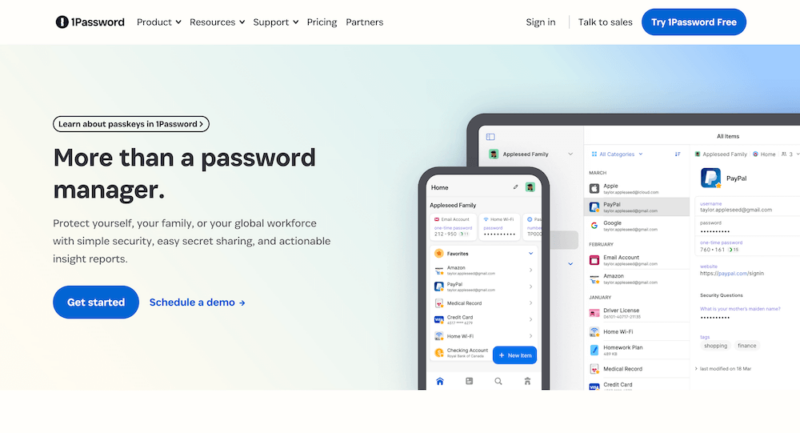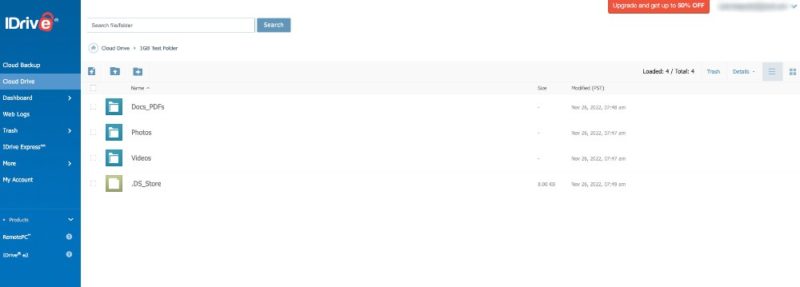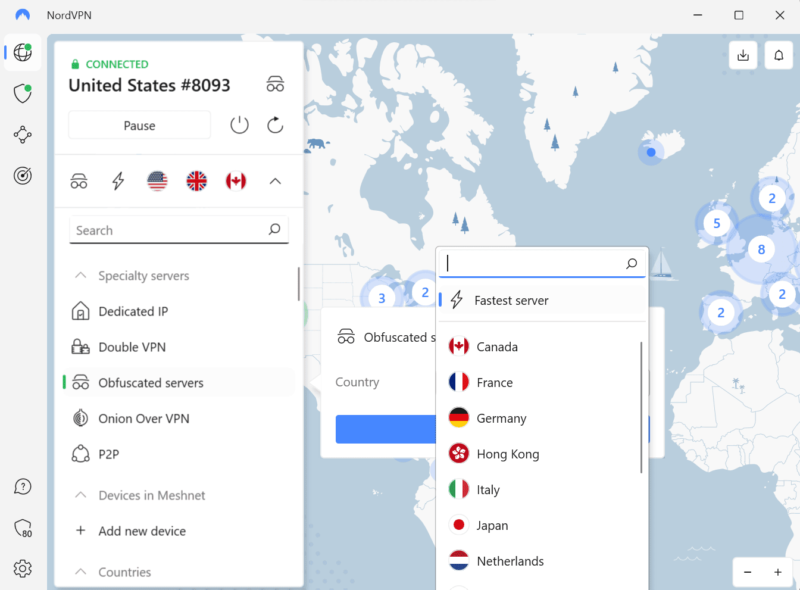Types of Cybercrime: A Comprehensive 2025 Guide with Examples & Prevention Techniques
Emails claiming you’ve won a prize are just one example of online fraud. There are many types of cybercrime that can compromise your sensitive data, leading to financial loss. Learn about the cybercrimes you might face and the most effective ways to prevent them.
Not a day passes without news about ransomware attacks, data breaches or phishing campaigns, and the estimated cost of cybercrime in the cybersecurity market is expected to keep growing. Knowing the various types of cybercrime and how to prevent them is crucial to staying safe online.
In this article, we will discuss different types of cybercrimes, offer some real-world examples and explain how you can avoid falling prey to cyberattacks.
-
11/20/2024 Facts checked
We’ve rewritten this article to include more types of cybercrime with examples and updated prevention techniques.
Definition: What Is Cybercrime?
Cybercrime is any illegal activity committed using a computer or the internet. It is an umbrella term that describes a broad range of criminal activities. Its objectives include — but aren’t limited to — gaining money, fulfilling personal vendettas and accomplishing political motives through cyberterrorism.
Individuals who commit cybercrimes are known as cybercriminals, hackers or threat actors. They often exploit weak cybersecurity, use psychological tricks, deploy malicious software and exploit system vulnerabilities to perpetrate cybercrimes.
While individuals often commit cybercrimes, organizations and nation-states also commonly engage in cybercriminal activities. The goals of cybercrime groups are similar to those of individuals — to achieve malicious objectives like making illicit money, conducting espionage, influencing public opinion and more.
How Cybercrime Affects Us
Cybercrime can affect its victims in multiple ways, including financial loss, identity theft and emotional trauma.
For example, a hacker might install spyware on a user’s system by tricking them into clicking a malicious link. This program collects the victim’s personal data and bank details, enabling the hacker to commit financial fraud and impersonate the victim while committing other crimes. All of this can leave the victim feeling violated and vulnerable.
In a business setting, cybercrime can also damage an organization’s reputation and force the victim company to pay hefty regulatory fines for failing to protect sensitive customer data. Cybercrimes committed by nation-states can spread misinformation and cause national security risks.
Categories of Cybercrime
Hackers don’t discriminate when picking targets. They attack individuals, companies and nation-states with equal enthusiasm. Experts divide cybercrimes into four categories based on the chosen target.
- Cybercrime against individuals: This category of crimes involves individuals, such as victims of virtual kidnapping, phishing and online harassment.
- Cybercrime against property: These crimes are committed against resources. Examples include intellectual property theft, DDoS attacks and malware that disrupts systems.
- Cybercrime against organizations: This crime category includes data breaches, business email compromise (BEC) and malware attacks against a company’s computer systems.
- Cybercrime against the government: These cybercrimes are often committed by an enemy of the state. Some examples are cyber espionage, terrorism-related cyberattacks and manipulation of election systems by misinformation and fake information.
Cybercrimes can also be classified into two types based on technology use: cyber-dependent crimes and cyber-enabled crimes. Cyber-dependent crimes, such as malware attacks, require the use of computers and networks.
Cyber-enabled crimes are traditional crimes that are amplified in reach and scale through computers and networks. Examples of cyber-enabled crimes are virtual kidnapping and online fraud.
The Most Common Types of Cybercrime
Preventing cybercrime starts with knowing the most common cyberattacks. If you don’t know what cyber threats you face, you can’t take proactive measures to mitigate the risks.
Phishing
Phishing is one of the most common cybercrimes. In a typical phishing attack, threat actors impersonate trusted, reputable authorities to trick users into sharing confidential information, such as credit card details, login credentials and social security numbers.
After successfully gathering your sensitive information, they can commit various illegal activities, including financial fraud, gaining unauthorized access to your systems and computer networks, and more. Phishing scams are often carried out through email, but other methods can be employed, such as phone calls, text messages and instant messages.
For example, hackers can send you an email stating, “Your Amazon account has been suspended due to suspicious activity. Please click here to verify.” When you click the link, it takes you to a fake Amazon page designed to steal your login credentials.
Identity Theft
In an identity theft attack, cybercriminals employ phishing and InfoStealer malware to steal personal data like credit card numbers, bank account details and social security numbers. They can use this stolen data to commit financial fraud or implicate you in unlawful activities, or they can sell your personal data to other nefarious actors on the dark web.
Hackers can also impersonate you to scam your friends and family. They might use a fake account to ask for money or sensitive information. As this account uses your profile picture and personal details, your loved ones may believe the requests are genuinely from you.
Malware
Malware is short for malicious software that is designed to damage systems, steal information and spy on victims’ activities. Ransomware is a prevalent type of malware used today. In a ransomware attack, a threat actor encrypts crucial data and asks for money in exchange for the decryption key.
Online Fraud
Cybercriminals use various deceptive tactics online to swindle money from unsuspecting users. They often lure victims with promises of quick profits, enticing deals or romantic connections.
The most common online fraud is the romance scam, where scammers create fake profiles to build romantic relationships with victims. Over time, they gain trust and eventually request money under the pretense of emergencies or travel expenses.
Computer Hacking
Computer hacking is the act of getting unauthorized access to systems to steal or encrypt personal or corporate data, install spyware or perform other malicious activities. Hackers often exploit vulnerabilities in old software or employ phishing campaigns to hack systems. Hackers can use a hacked computer system to carry out attacks on other computers.
Other Types of Cybercrime
Here are some other types of cybercrime you should know about to stay safe online.
- Botnet: A botnet is a network of connected compromised devices controlled by a cybercriminal to carry out malicious activities. Slow performance, high CPU or memory usage without an obvious cause, unusual network activity and frequent crashes are signs of a botnet.
- DDoS attack: In this attack, a cybercriminal uses a botnet to disrupt a service, network or server by overwhelming it with a flood of traffic.
- Business email compromise (BEC): Here, a cybercriminal impersonates a trusted individual within an organization to trick other employees into transferring money or sharing confidential information. BEC is considered a unique form of phishing.
- Cryptojacking: In this method, cybercriminals secretly hijack systems to mine cryptocurrency. Since crypto mining demands substantial processing power, the hackers can enjoy all the benefits of mining with none of the downsides.
- Software piracy: With this crime, a cybercriminal makes copies of copyrighted materials and sells them for financial gain, violating the terms of license agreements.
Real-World Examples of Cybercrime
A successful cyberattack exposes sensitive information and causes financial losses. The amount of damage depends on the scale of the attack, the sensitivity of the affected data and the time it takes to detect and stop the attack. Here are some real-world case studies of cybercrimes.
WannaCry Ransomware Attack
The WannaCry ransomware attack affected computers in 150 countries, causing losses of around $4 billion. WannaCry spread through a vulnerability in the Microsoft Windows implementation of the Server Message Block (SMB) protocol.
Though Microsoft had already provided the patch for the vulnerability, many systems worldwide were not patched, making them prime targets for the attack. This example neatly illustrates why it’s important to keep your system updated.
Equifax Data Breach
The Equifax data breach impacted about 143 million people. This attack exposed personally identifiable information (PII), including their names, addresses, social security numbers and driver’s license numbers. The data breach happened because the Equifax officials failed to install a patch for a known vulnerability even though it had already been released.
RockYou2024
The RockYou2024 password breach exposed around 10 billion passwords, making it one of the largest password breaches in history. This demonstrates the dangers of reusing passwords across multiple accounts. Unique passwords help prevent credential stuffing, where hackers use leaked passwords to try accessing other accounts.
MOVEit Transfer Data Breach
The Clop ransomware gang exploited a zero-day vulnerability in the MOVEit file transfer tool, causing a data breach that affected 1.3 million people. A zero-day vulnerability is a security flaw that is unknown to the vendor, so there is no available patch to fix it. However, good antivirus software can use machine learning to catch common malware behaviors.
Cybercrime Prevention Techniques
Strategies to prevent cybercrime include adding security tools to your digital devices and engaging in safe online behavior.
Final Thoughts: Internet Crime
With the advancement of artificial intelligence, hackers can now craft highly sophisticated phishing campaigns. They have more opportunities than ever to install malware, steal identities, cause data breaches and run various online frauds.
Therefore, you should take proactive steps to avoid becoming a victim of cybercrime, such as using a good antivirus program, backing up crucial data in the cloud, having strong passwords and using a VPN.
What is your experience with cybercrimes? Have you been the victim of cybercrime in the past? Tell us about it in the comments. Thanks for reading!
FAQ: Different Types of Cybercrime
The most common types of cybercrimes are phishing, identity theft, malware, online fraud, data breaches, hacking, virtual kidnapping and business email compromise (BEC).
Cybercrimes fall into three main categories: crimes against individuals, crimes against property and crimes against organizations. However, nation-states also commit cybercrimes against other nations, adding a fourth category for crimes against governments.
The most common types of cybercrimes are phishing, identity theft, malware, online fraud and computer hacking.
According to security company Kaspersky, the top five cybercriminals are Kevin Mitnick, Albert Gonzalez, Jeanson James Ancheta, and a team consisting of Mathew Bevan and Richard Pryce. They are wanted for cybercrimes that range from unauthorized access and data theft to system and network disruptions.






